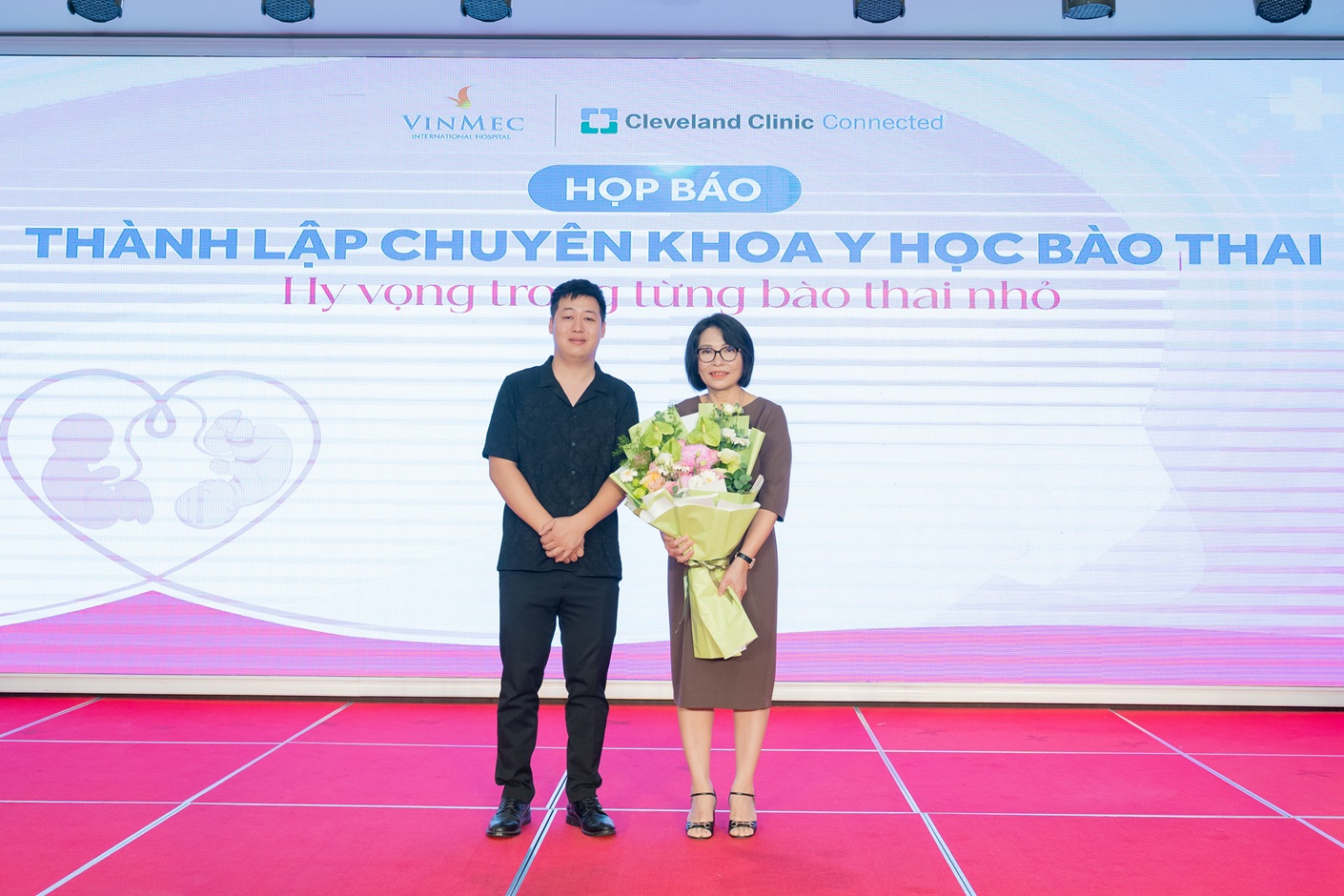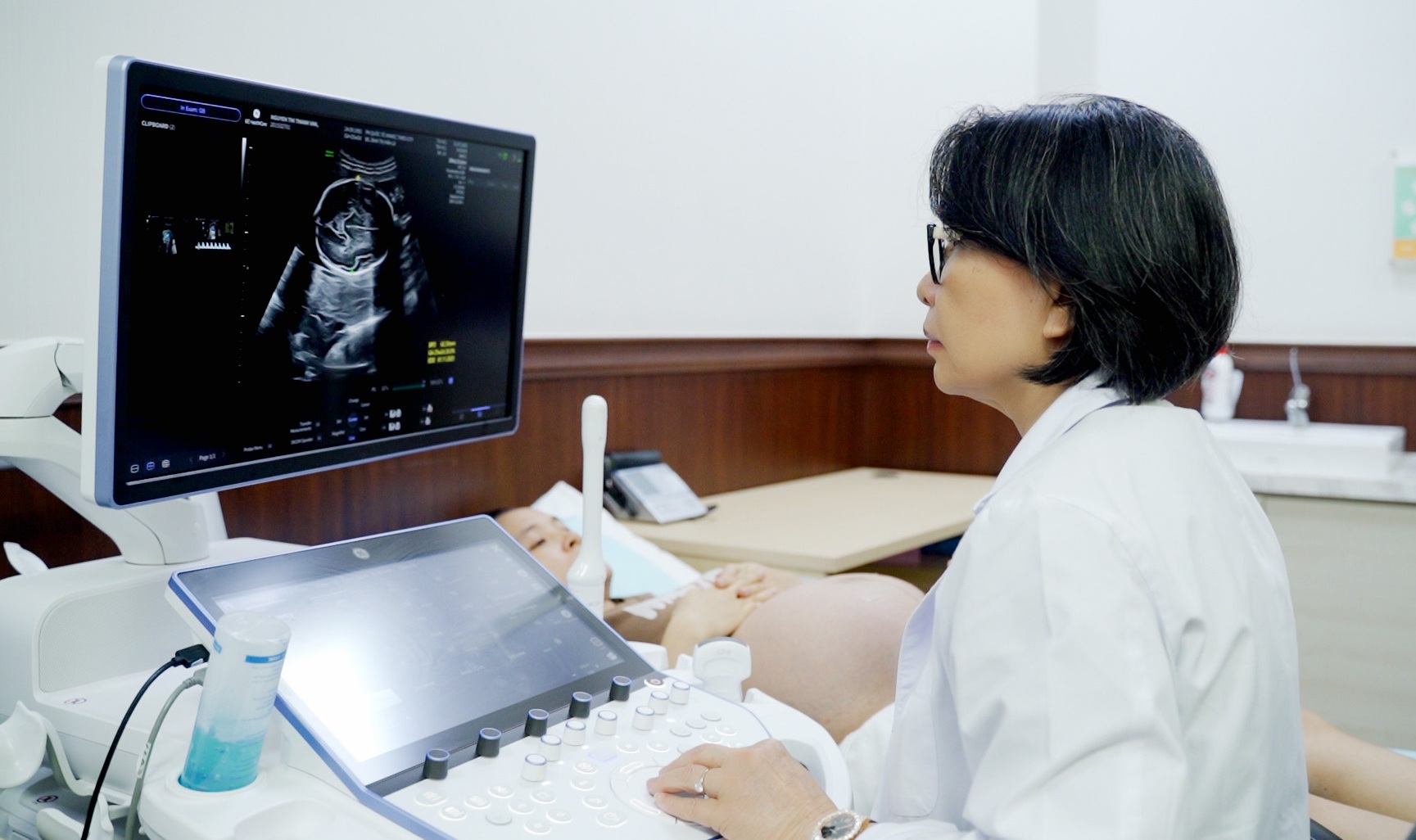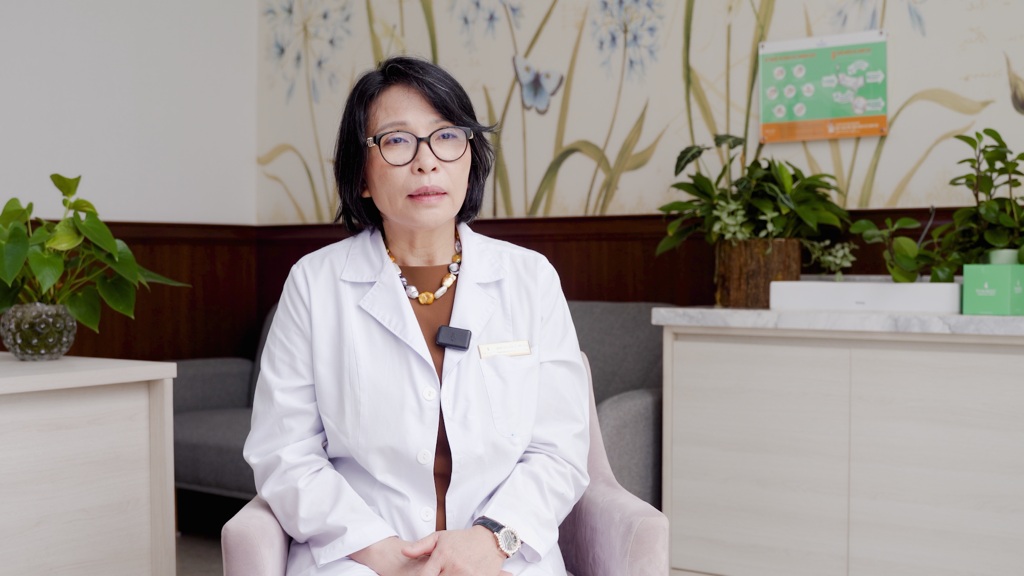Trinh Linh Chi (Hai Phong) was pregnant with twins in late 2024. The first months of Chi’s pregnancy proceeded normally, but by week 16, doctors suspected she had twin-to-twin transfusion syndrome (TTTS), a rare and dangerous complication.
By week 17, Chi and her husband sought out Doctor Dinh Thi Hien Le, Head of the Fetal Medicine Department at Vinmec Times City International General Hospital (Hanoi). With over 30 years of experience, Dr. Le is a pioneer in introducing fetoscopic laser surgery for TTTS to Vietnam, helping hundreds of babies be born healthy. She was also the first in the world to successfully preserve a ruptured uterus at 18 weeks of pregnancy and has personally performed thousands of complex obstetric surgeries.
“During the examination, the TTTS was already at stage three. Without treatment, one fetus could be stillborn, and the other would face the risk of irreversible brain damage or death. In addition, severe polyhydramnios easily leads to premature rupture of membranes and miscarriage. Therefore, a decision had to be made quickly,” Dr. Le shared.
That same day, Chi underwent fetoscopic laser photocoagulation, a technique using a fetoscope to find and sever abnormal blood vessels between the twins, ending the unequal blood transfusion. After one day, the amniotic fluid and Doppler indices returned to normal, and the health of both mother and fetuses stabilized.
On 4/7, the two baby girls were born at Vinmec, weighing 2.45 kg and 1.95 kg, respectively. Dr. Le said, “When we first met, the expectant mother sobbed with fear. Today, holding her two children in her arms, she cried again, but these were tears of happiness, which is the greatest reward for those of us pursuing fetal medicine.”
 |
The family of Trinh Linh Chi and Vu Xuan Linh present flowers to thank Dr. Dinh Thi Hien Le during the press conference establishing the Fetal Medicine Department. *Photo: Vinmec* |
TTTS occurs when twins share a placenta, with abnormal connections between the blood vessels. As a result, one fetus receives too much blood, while the other receives too little, leading to polyhydramnios in one and oligohydramnios or anhydramnios in the other. Without timely intervention, this complication can cause abnormal Doppler of cerebral and umbilical vessels, fetal hydrops, and even death of both twins.
Among many treatment methods, fetoscopic laser photocoagulation is considered effective, with an average global success rate of 80-90%. At Vinmec, this rate is about 83%, comparable to international centers.
According to Dr. Le, the uterus is a safe environment for fetal development. However, when serious pathologies arise, if not promptly intervened, the condition can worsen, making it difficult for the fetus to survive until birth. Fetal medicine intervention is therefore necessary, although it always carries risks such as infection, premature rupture of membranes, miscarriage, or premature birth.
“Fetal medicine doesn’t just stop at screening and diagnosis, but also directly intervenes and treats from within the womb. The goal is to help the baby be born healthy like any other child, or at least slow the progression of the disease so that after birth, pediatricians can continue effective treatment, minimizing complications,” Dr. Le said.
 |
Dr. Le recommends that regular prenatal checkups and complete ultrasounds at important milestones are crucial for early detection of abnormalities, expanding the chances of survival for the fetus. *Photo: Vinmec* |
The Fetal Medicine Department at Vinmec Times City is built on the expertise of the obstetrics system, with the collaboration of diagnostic imaging, genetics, anesthesia, and neonatal resuscitation. The center is capable of comprehensively deploying leading-edge techniques worldwide: prenatal genetic diagnosis, specialized morphological ultrasound, fetoscopic surgery, intrauterine transfusion, treatment of TTTS, and management of complex abnormalities such as diaphragmatic hernia, heart defects, thalassemia, and preeclampsia.
The difference is that the fetus is viewed as a real patient—examined, diagnosed, and treated right from the womb. This approach helps doctors proactively manage high-risk pregnancies, contributing to a generation of healthy citizens and ensuring maximum safety for the mother.
 |
Dr. Dinh Thi Hien Le, Head of the Fetal Medicine Department, Vinmec Times City International General Hospital. *Photo: Vinmec* |
“Vinmec aims to develop fetal medicine not only in a clinical role but also as a center for training, research, and technology transfer, contributing to the formation of a network of experts in Vietnam, connecting with the international community in the future,” added Dr. Le.
The Dan












